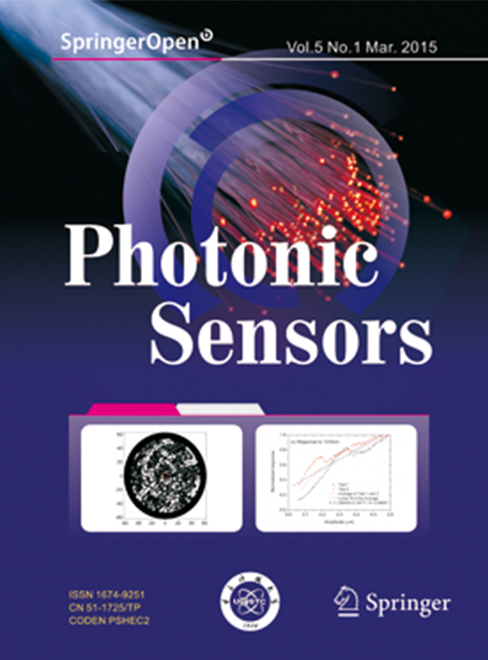 View fulltext
View fulltext
The deformation and reconstruction of the composite propeller under the static load in the laboratory is studied so as to provide the basic research for the deformation and reconstruction of the underwater deformed propeller. The fiber Bragg grating (FBG) sensor is proposed to be used for strain monitoring and deformation reconstruction of the carbon fiber reinforced polymer (CFRP) propeller, and a reconstruction algorithm of structural curvature deformation of the CFRP propeller based on strain information is presented. The reconstruction algorithm is verified by using variable-thickness CFRP laminates in the finite element software. The results show that the relative error of the reconstruction algorithm is within 8%. Then, an experimental system of strain monitoring and deformation reconstruction for the CFRP propeller based on the FBG sensor network is built. The propeller blade is loaded in the form of the cantilever beam, and the blade deformation is reconstructed by the strain measured by the FBG sensor network. Compared with the blade deformation measured by three coordinate scanners, the reconstruction relative error is within 15%.
Cascaded random Raman fiber lasers (CRRFLs) have been used as a new platform for designing high power and wavelength-agile laser sources. Recently, CRRFL pumped by ytterbium-doped random fiber laser (YRFL) has shown both high power output and low relative intensity noise (RIN). Here, by using a wavelength- and bandwidth-tunable point reflector in YRFL, we experimentally investigate the impacts of YRFL on the spectral and RIN properties of the CRRFL. We verify that the bandwidth of the point reflector in YRFL determines the bandwidth and temporal stability of YRFL. It is found that with an increase in the bandwidth of the point reflector in YRFL from 0.2 nm to 1.4 nm, CRRFL with higher spectral purity and lower RIN can be achieved due to better temporal stability of YRFL pump. By broadening the point reflector’s bandwidth to 1.4 nm, the lasing power, spectral purity, and RIN of the 4th-order random lasing at 1 349 nm can reach 3.03 W, 96.34%, and –115.19 dB/Hz, respectively. For comparison, the spectral purity and RIN of the 4th-order random lasing with the point reflector’s bandwidth of 0.2 nm are only 91.20% and –107.99 dB/Hz, respectively. Also, we realize a wavelength widely tunable CRRFL pumped by a wavelength-tunable YRFL. This work provides a new platform for the development of ideal distributed Raman amplification pump sources based on CRRFLs with both good temporal stability and wide wavelength tunability, which is of great importance in applications of optical fiber communication and distributed sensing.
Long-period waveguide grating based filters have attracted attention due to their flexible fabrication, a variety of materials and structures, low back reflection, low insertion loss, and excellent performance in the tuning range and temperature sensitivity. To our knowledge, for the first time, a two-segment polymer long-period waveguide grating was cascaded to implement a filter with a narrower bandwidth. Experimental results showed that the device had a maximum extinction ratio of 24 dB at 1 577 nm, and the 12 dB bandwidth was 10 nm. The temperature sensitivity of the fabricated device was 1.79 nm/℃.
Sulfamethoxazole (SMX) is a sulfonamide antibiotic primarily used to treat urinary tract infections and used in veterinary and industrialized husbandry to treat diseases and food additives. Like other antibiotics, SMX is considered as a pollutant in water and food that threaten local life. This study developed a surface plasmon resonance (SPR) sensor chip that is fast, highly selective, and reusable, and requires no pretreatment for detecting SMX. As a receptor, SMX imprinted methacrylic acid-2-hydroxyethyl methacrylate-ethylene glycol dimethacrylate polymer [poly(MAA-HEMA-EGDMA)] was used. The surface of the gold SPR chips was coated with a drop-casting method. The nanofilm coated chips were characterized by scanning electron microscopy (SEM), atomic force microscopy (AFM), ellipsometer, contact angle measurement, and Fourier-transform infrared spectrometry (FTIR). Imprinting factor (IF) was calculated as: ΔR[MIP(molecularly imprinted polymers)]/ΔR[NIP(non-imprinted)]=12/3.5=3.4. Limit of detection (LOD) and limit of quantification (LOQ) values were calculated with 3 s/m and 10 s/m methods, and the results were found to be 0.001 1 μg/L for LOD 0.003 4 μg/L for LOQ. Adsorption studies on both standard SMX solution and commercial milk samples were applied. Also, we investigated the developed chip’s reusability, storability, and selectivity with amoxicillin and cefalexin.
A length-matched micro Fabry-Perot (FP) interferometer is proposed for strain measurement under irradiation environment. Theoretical simulation shows that a well length-matched FP sensor can achieve a very low drift of the cavity length and strain sensitivity in irradiation environment. In experiment, such an FP cavity is realized by laser micromachining. It shows a low cavity length drift of -0.037 μm and a strain sensitivity deviation of 0.52%, respectively, under gamma irradiation. Meanwhile, the intensity of interference fringes is also stable. As a result, such a length-matched FP cavity is a very promising candidate for strain sensing in radiative environments.
A novel fiber-optic magnetic field sensor with high interrogation speed and resolution by using an etched fiber Bragg grating (FBG) in conjunction with a dual-loop optoelectronic oscillator (OEO) is proposed and experimentally demonstrated. A commercial FBG is firstly dipped into mixed hydrofluoric acid solution to remove the cladding layer and then is embedded with the magnetic fluid (MF) as a sensing element. The central wavelength reflected from the FBG is related to the overall time delay of the dual-loop OEO, which determines the oscillating frequency of the OEO. Therefore, the magnetic field can be estimated by measuring the oscillating frequency shift of OEO. The experimental results show that the oscillating frequency linearly increases with the increment of the magnetic field, achieving the sensitivity of 16.3 Hz/Oe with an R-square of 0.991 in the range of 5 mT-10 mT. In addition, the maximum error is within ±0.05 mT in the range of 7 mT-8 mT, which offers potentials in many fields where the high-precision magnetic field measurement is required.









